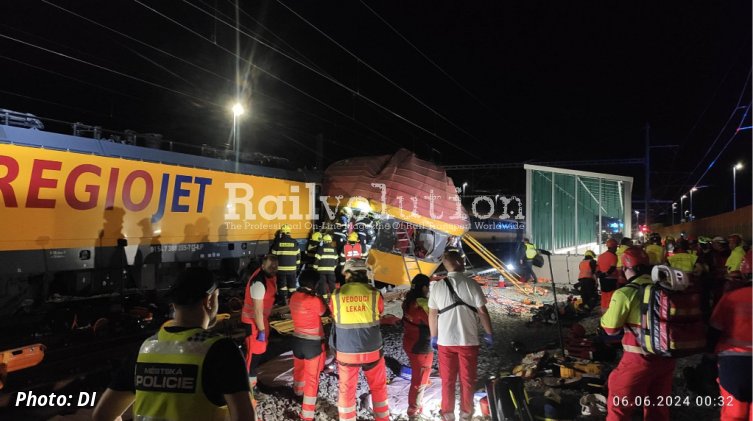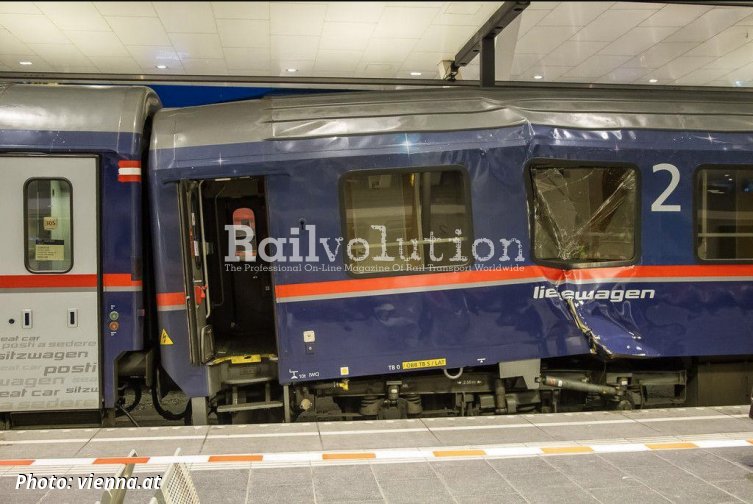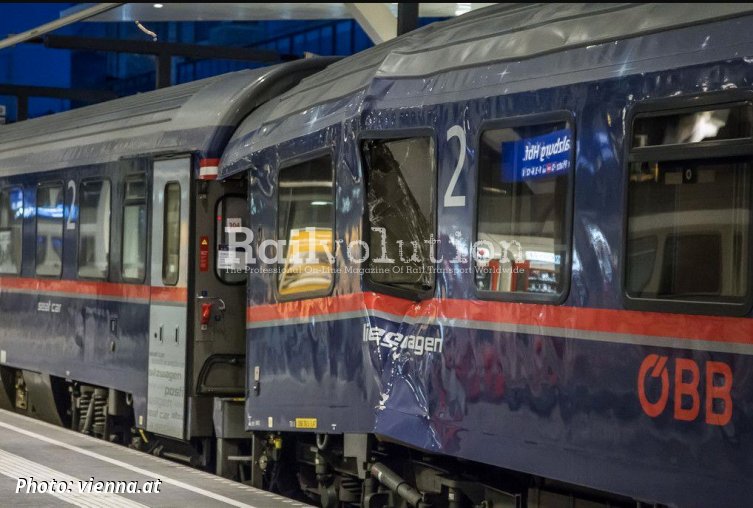Comment on the accident in Pardubice
posted on 10th Jun 2024 21:40
Following the accident of RJ 1021 service in Pardubice on 5 June 2024 at 22.49 h, RegioJet issued a press release on 7 June 2024 announcing that "from Saturday 8 June 2024 it is withdrawing all Austrian type sleeping cars from service. This decision has been made following the experience of the recent tragic accident of train RJ 1021 on the Praha - Košice - Chop line and an earlier similar accident in Austria. The reason for this is the discovery of design flaws in these carriages.
Today we have found that an ÖBB sleeper car of the same type from the same manufacturer was damaged in an identical way in a banal accident in 2018 in Salzburg, i. e. by breaking the main frame between the first and second compartment. The breaking of the frame was the cause of the car breaking completely in the Pardubice accident and is also the cause of the fatalities.
The accident in Salzburg, which left 54 people injured, happened during a simple manouevre. In Pardubice, a freight train crashed at a higher speed, and its weight was at least 20 times greater. The deformation is proportional to the weight and speed. The collision in Pardubice was therefore about 30 times more severe than the accident in Salzburg, and the devastation was therefore much greater. This finding led RegioJet to decide to withdraw all 13 cars from service, even though identical cars are operated by other companies.
Radim Jančura, owner of RegioJet, adds: 'This repeated experience led us to decide to carry out a thorough investigation and, on the basis of the precautionary principle, to subsequently take these cars out of service due to a suspected serious design flaw. The safety of our passengers and staff is our top priority. RegioJet is committed to continuously improving safety standards and will continue to invest in modernisation of its fleet to ensure the highest level of service.' Trains that have been operated with these sleepers to date will be progressively equipped with alternative cars to ensure that customer service is not disrupted."
Questions to ÖBB
Given the fact that this type of car also went through the approval process and the associated strength tests prior the beginning of its operation, this statement prompted us to ask ÖBB for their opinion on the cars in question. We therefore wrote to the company‘s press department.
Following the accident in Pardubice, RegioJet has taken all 13 of its Class Bcmz cars out of service, with Radim Jančura claiming that this is a design defect, as such a deformation had already occurred in 2018 - see https://www.krone.at/1907380
We are therefore asking:
1) have ÖBB found a design defect in the Class Bcmz cars or a similar defect AFTER the Salzburg accident?
2) have ÖBB found a design defect in the Class Bcmz cars or a similar defect BEFORE the Salzburg accident? In other words, has a design defect been found/observed in the Class Bcmz cars since they began operation in the 1980s and in the first twenty or thirty years of their operation?
3) will ÖBB be doing any emergency inspections of the Class Bcmz cars (and similar)?
4) have ÖBB experienced this kind of bodyshell deformation at any other SGP-built or Eurofima type cars in the last ten or twenty years?
The operator's press department replied: "ÖBB inspects its vehicles regularly and we are not aware of any damage to these operated vehicles. There are currently 15 Class Bcmz cars in service on ÖBB services. As all ÖBB cars are properly maintained in this respect, they run without restrictions. And we are not aware of any defects in the construction of the cars in question.
These couchette cars were manufactured between 1981 and 1982 and the affected car was sold already in 2015. RegioJet has therefore been responsible for maintenance since 2015. The latter refers to the fact that a similar deformation already occurred in the Salzburg accident in 2018. However, the comparison with the Salzburg accident is not correct."
Our editorial comment
Let us add to this that it is obviously time that RegioJet's statement that it "is committed to continuously improving safety standards and will continue to invest in the modernisation of its fleet" also meant that it would one day acquire new-built cars for its open access operations and PSO (Public Service Obligation) trains.
RegioJet has been talking about this for many years, with the last such intention appearing in 2022, when an order for 300 new cars with a maximum speed of 200 km/h from PESA was envisaged. However, even this was not materialised and again it was mainly left to buying various second-hand vehicles from many European countries (of course, because of the purchase price). As a result, of around 350 cars owned by RegioJet, only 26 are new-build ones, namely 10 + 10 cars bought from ASTRA Vagoane Călători plus 6 similar, slightly older cars bought from the bankrupt Italian company Arenaways.
Which means that RegioJet has an only about 7% (!) of new-built cars in this vehicle segment. And whether anyone admits it or not, age simply takes its toll on these old cars - if only because every vehicle was designed for a certain life and stress, so the possible material fatigue is not that surprising. And no amount of interior modifications (if done at all) will make much difference. In this respect, it's better not to even think about how the Pardubice accident would have turned out if the trains had collided at a much higher speed...




